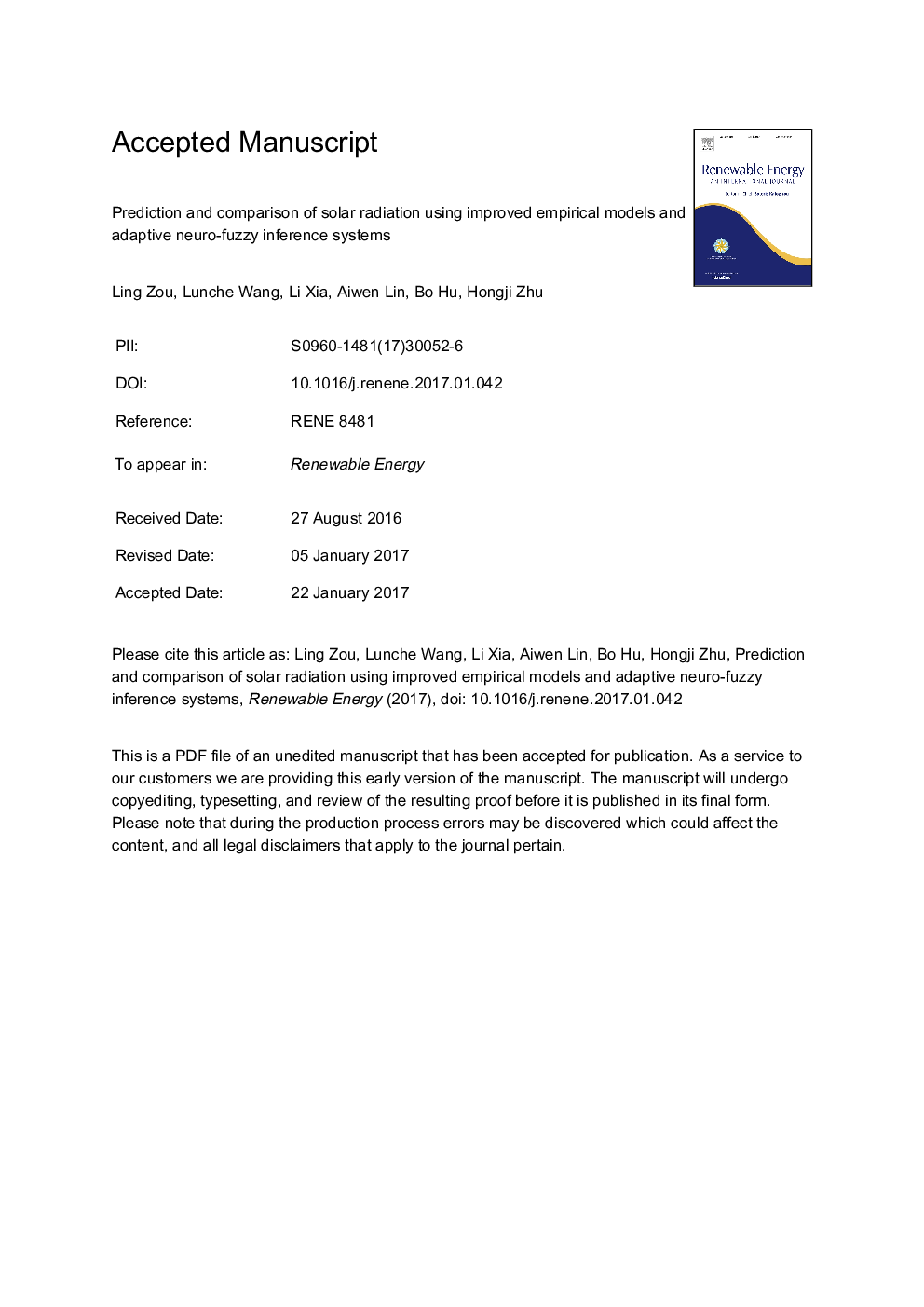| Article ID | Journal | Published Year | Pages | File Type |
|---|---|---|---|---|
| 4926403 | Renewable Energy | 2017 | 24 Pages |
Abstract
Solar radiation plays an important role in climate change, energy balance and energy applications. In this work, an Adaptive Neuro-Fuzzy Inference Systems (ANFIS) is proposed and compared with Expanded-Improved Bristow-Campbell Model (E-IBCM) and Improved Yang Hybrid Model (IYHM) to predict daily global solar irradiance (Hg) in China. The BCM is expanded by adding meteorological parameters and coefficients calibrated at each station, the YHM is improved by correcting cloud transmittance coefficients at three stations in Hunan province, China. Daily sunshine duration (S), relative humidity (RH), precipitation (Pre), air pressure (AP), daily mean/maximum/minimum temperature (ÎT/Tmax/Tmin) are used as inputs for model development and application, while daily Hg is the only output. Performances of different models are evaluated by Root Mean Square Errors (RMSE), Mean Absolute Errors (MAE) and Coefficient of Determination (R2). The results indicate that the improved empirical models (E-IBCM and IYHM) provides better accuracy than the original models and the ANFIS model is proved to be superior to the E-IBCM and IYHM model in predicting Hg. The statistical results of ANFIS model range 0.59-1.60Â MJÂ mâ2Â dayâ1 and 0.42-1.21Â MJÂ mâ2Â dayâ1 for RMSE and MAE, respectively. The nonlinear modeling process of ANFIS may contribute to its excellent modeling performance.
Related Topics
Physical Sciences and Engineering
Energy
Renewable Energy, Sustainability and the Environment
Authors
Ling Zou, Lunche Wang, Li Xia, Aiwen Lin, Bo Hu, Hongji Zhu,
